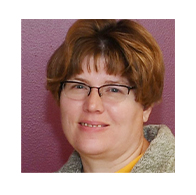How Iowa’s two-person staff transformed the public involvement process
DOT’s suite of virtual tools have increased productivity, transparency and community involvement
How Iowa’s two-person staff transformed the public involvement process
By Valerie Brewer and Jon Rees - Iowa DOT
Transforming Iowa’s public involvement process became essential when several employees retired, leaving only two newer staff members to manage a manual, paper-based system for all six Iowa DOT districts covering 99 counties.
Our paper-based system required hours of deciphering handwritten comments, scanning public comment forms and manually assembling pages of documents. The burdensome administrative tasks left little time to focus on messaging, coordination, content and outreach – the most critical aspects of public involvement.
Needing to find a better way, we began working with a consultant to reinvent our public involvement process. In addition to eliminating the bulk of the administrative work, our goal was to develop an open, transparent process. Six years later, we have a suite of virtual public involvement tools that have allowed us to achieve our goals.
The Public Involvement Management Application
We reviewed several platforms and reached out to the DOT community for what others were using. We reviewed several off-the-shelf platforms and reached out to the DOT community for what others were using before deciding to develop PIMA. For us, a customizable, web-based application that matched the processes and policy we needed to follow as a DOT was the most versatile and simple path to success. PIMA allows us to post a prerecorded PowerPoint Presentation, a WebEx meeting, or include geospatial mapping, depending on a project’s depth and complexity. And, PIMA will allow us to integrate new platforms as technology evolves. For example, we have integrated PIMA with YouTube Live.
Iowa DOT employees can access PIMA using their credentials. It’s a secure web application. The PIMA URL syncs with our Microsoft Office 365 account, so once an employee is logged into Microsoft Office, they can seamlessly pass into PIMA. Because anyone in the DOT can have access, we built in an administrative function that allows us to grant different access levels, depending on an employee’s role with a project. Most employees have read-only access, but district planners, who help us manage the public involvement process, have more access. They can respond to a participant’s posted comment and add attachments to those comments. PIMA even allows us to create targeted access for consultants who are assisting us with our more extensive public involvement programs.
Since we initially rolled out PIMA, we have doubled – if not tripled – the number of projects we are managing at any given time. One staff member can easily handle four to five projects simultaneously. We have held more than 250 public involvement events, received more than 3,100 comments and connected with 39,000 stakeholders. That’s a tremendous amount of data to track if it were all on paper. But PIMA automatically populates all data into a single source of truth allowing us to see how the same stakeholder may be engaging on multiple projects. With a click, we can run queries, export the data into different formats and create report summaries.
More than that, PIMA allows us to “hear the silence.” By taking our process online, we are hearing from individuals who usually would not engage – like those who may be neutral or leaning one way but are still unsure. They are no longer reluctant to speak up because it’s easy to access PIMA, post a comment and wait for our response. The submission of their initial comment allows us to create an immediate conversation with the individual, ensuring we have an informed constituent.
Geospatial information mapping tool
Integrating Esri’s ArcGIS Online with PIMA allows us to map public sentiment about a project. When a citizen submits an electronic comment, they’re also asked to tap and drop a pushpin onto a map, indicating their comment location and whether they favor or oppose the project. We can view the project map in real-time and see, for example, where there is a cluster of red pushpins (opposition), a scattering of green pushpins (support) as well as neutral support. The geospatial features help us to strategically target communications and instantly identify and address pockets of concern. From a social equity standpoint, we can see areas within the project that lack participation, allowing us to tailor future engagement with more focus on those communities.
An online public portal
Iowa DOT has thousands of projects in our system. In the interest of transparency, we wanted to give citizens access to information about all of them, not just those requiring a significant detour, right of way impact or NEPA documentation. Our solution was to create a public portal with curated data from PIMA, which anyone can view by going to https://public.iowadotpi.com/.
The site went live in December 2018 and automatically listed all Iowa DOT projects, whether they are in the planning stage, under construction or recently constructed. Visitors can locate any project on the interactive map and view all of our engagement statistics live, including overall project favorability, individual comments (via the map) and public meeting statistics. Tap on a comment, and you can see what the stakeholder shared (with his or her personal information hidden). Most importantly, you can see how the DOT responded and engaged in a meaningful conversation. If visitors to the site do not see the project they are interested in, they can click on a state map, click on an area and bring up every DOT project. Users can zoom in on a specific project, see the project manager’s phone number, post a comment and read all previous comments and DOT responses.
Giving citizens on-demand access to information about any Iowa DOT project, large and small, has greatly increased our transparency.
Utilizing a virtual public involvement ecosystem
PIMA is the central component that bonds all of our tools together. It is the hub through which all stakeholder communication is channeled. If we receive feedback, it comes through PIMA, and a stakeholder receives a response through PIMA. If we want to share project updates, we send a mass email to our subscribed stakeholders through PIMA. When we hold a public meeting, in-person or virtual, we send invitations, capture meeting attendance and gather comments specific to that event through PIMA.
We’ve held three public information meetings in Lansing, Iowa, regarding replacing the historic Black Hawk Bridge across the Mississippi River. Initial sentiment was negative, and we knew it because citizens were using our public portal to learn about the project and post comments before and after the first public meeting. We learned the community was opposed to replacement because the process would require a 70-mile detour. They didn’t understand why we couldn’t just repair the bridge, which is an iconic landmark.
When we traveled to Lansing to hold our first public meeting (pre-pandemic), we were equipped with these insights and ready to justify the need for replacement. Instead of using paper forms, we distributed iPads to attendees and invited them to submit their contact information and comments in the electronic form provided. Many residents were hesitant to use the iPads at first. By the third meeting, their comfort level had increased, and they eagerly used the tablets.
Each participant’s information and feedback was automatically loaded into the project’s PIMA database, allowing us to easily track individual stakeholders, their comments, support or opposition and their geographic location in relation to the project site.
With the help of PIMA, we went from fielding overwhelmingly negative comments at the first Lansing public meeting to receiving 300 comments at the third public meeting regarding which proposed bridge design they liked best. Participants became increasingly comfortable with the tool, the process and felt their opinions were valued.
Available to the industry
We share PIMA with any DOT that signs a Memorandum of Agreement directly with Iowa DOT. The memorandum establishes that any improvements or enhancements made to PIMA will be made available to Iowa DOT and other members of the PIMA “consortium” others that have signed agreements. HNTB exclusively manages the source code and performs all PIMA deployments and enhancements, acting as a central steward for the consortium.
Between other DOTs we’ve signed MOAs with, and project deployments managed by HNTB, we’ve just seen the 20th agency deployment take place. It’s exciting to see how PIMA is evolving as a comprehensive virtual public involvement tool across transportation, transit and municipal agencies.
The road ahead
Late summer 2020, in direct partnership with the Massachusetts Department of Transportation, we developed live-streaming enhancements with PIMA to help support the need to conduct real-time, virtual meetings. One of the key features we felt was necessary was the ability for the public to join our virtual podium. Conducted from and managed with PIMA, the live meeting feature directly integrates with YouTube Live. Using this feature, after a live panel presentation portion of the presentation concludes, a PIMA moderator enables the virtual podium function and encourages viewers to join and share their comments or questions. The PIMA moderator displays in real-time each comment or question to the audience, as the panel of presenters responds to it. All feedback is stored within PIMA and automatically becomes a part of the meeting record.
We continue to refine and enhance these features as more agencies use and see the value of capturing live meeting conversation.
A hybrid approach for the future
Our goal is not to replace in-person public meetings with virtual ones. Some constituents prefer face-to-face interaction, and so do we. But while we wait for a time when we can return to in-person meetings, we are happy with PIMA. It is a permanent part of our public involvement process because it allows us to work more efficiently, be more transparent and cast our net farther.
ABOUT THE AUTHORS
 Valerie Brewer is a program planner III in the Iowa Department of Transportation’s public involvement section. She represents three of the DOT’s six districts. She has been a part of the development of the DOT’s Public Information Management Application (PIMA) since its conception in 2013. Contact her at (515) 239-1626 or [email protected].
Valerie Brewer is a program planner III in the Iowa Department of Transportation’s public involvement section. She represents three of the DOT’s six districts. She has been a part of the development of the DOT’s Public Information Management Application (PIMA) since its conception in 2013. Contact her at (515) 239-1626 or [email protected].
 Jon Rees is a program planner III in the Iowa Department of Transportation’s public involvement section. He is experienced in geospatial applications on highway-related projects, particularly highway safety studies, NEPA documentation and implementing GIS practices into public involvement. His focus is to improve management of public involvement processes and interact with the public. Contact him at (515) 239-1431 or [email protected].
Jon Rees is a program planner III in the Iowa Department of Transportation’s public involvement section. He is experienced in geospatial applications on highway-related projects, particularly highway safety studies, NEPA documentation and implementing GIS practices into public involvement. His focus is to improve management of public involvement processes and interact with the public. Contact him at (515) 239-1431 or [email protected].
SEE MORE ARTICLES
North Central Texas Council of Governments
